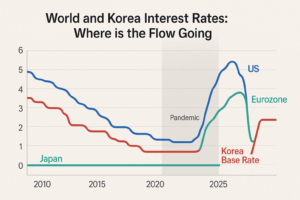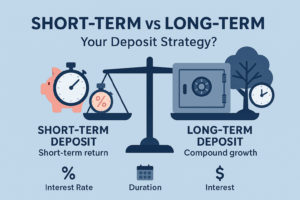Stress Management & Sleep Medicine: What Mental Health Insurance Covers in Korea (2025)
Stress and sleep problems often feed into each other. In Korea, care for both is anchored by the National Health Insurance (NHI) for clinical services and nationwide public programs for screening and crisis support. This 2025 guide summarizes the latest, officially confirmed items that are typically covered—especially psychiatric visits, depression screening, sleep testing (polysomnography, PSG), and positive airway pressure (PAP/CPAP) therapy—so you can plan care and costs with confidence. :contentReference[oaicite:0]{index=0}

1) Core Mental Health Coverage Under NHI
Medical (psychiatry) visits are covered. When you see a psychiatrist at a licensed medical institution, evaluation, diagnosis, and medically necessary treatment/medication are reimbursed under NHI’s “healthcare benefits,” with standard patient co-pays that vary by facility level and service type. Screening and preventive services are also provided through the national health checkup program. Always ask the clinic whether a service is billed as insured (covered) or non-insured (out-of-pocket). :contentReference[oaicite:1]{index=1}
2) Depression Screening: Biennial Checks Are Now Standard
To catch problems earlier, the Ministry of Health & Welfare (MOHW) shortened the mental health screening interval in the national health checkup from once every 10 years to once every 2 years. This policy was formally announced on April 24, 2023 and is being implemented to strengthen suicide-prevention efforts in the community. If you’re eligible for the NHI checkup, expect standardized depression questionnaires more frequently as part of your routine examination. :contentReference[oaicite:2]{index=2}
Who gets screened?
Eligibility follows the NHI health checkup cycle (age and employment status rules). In addition, government announcements in late 2023/2024 indicated an expansion of biennial mental-health checkups for young adults (20–34) within the state program from 2025, aligning with the broader two-year screening direction. Check your invitation notice or ask your insurer/clinic for your personal schedule. :contentReference[oaicite:3]{index=3}
3) Sleep Medicine: PSG & PAP/CPAP Are Covered When Medically Indicated
Since July 2018, NHI has reimbursed in-lab polysomnography (PSG) for suspected sleep apnea and related sleep disorders when clinically necessary. Following a qualifying diagnosis, PAP/CPAP therapy (typically via rental with supplies such as masks) is also covered under defined criteria. After coverage began, Korean studies and registries reported large increases in PSG and PAP use nationwide, reflecting easier access to care. Simple snoring without medical necessity is not covered. :contentReference[oaicite:4]{index=4}
Typical clinical path
- Initial consult in ENT, pulmonology, neurology, or psychiatry/sleep clinic → insurance-covered if medically necessary. :contentReference[oaicite:5]{index=5}
- PSG ordered based on symptoms/risk (e.g., witnessed apneas, daytime sleepiness, resistant hypertension) → reimbursed when criteria are met. :contentReference[oaicite:6]{index=6}
- Diagnosis of OSA → PAP/CPAP prescribed; coverage generally applies to moderate–severe OSA and certain mild cases with complications/comorbidities, under policy criteria used in clinical practice. :contentReference[oaicite:7]{index=7}
Why sleep care matters for mental health
Treating sleep apnea can improve daytime function, mood, and overall stress resilience. Post-2018 Korean research also discusses adherence and follow-up requirements linked to insurance coverage, which support long-term treatment success. Ask your provider about device download checks and minimum-use thresholds. :contentReference[oaicite:8]{index=8}

4) What’s Commonly Not Covered
- Private, non-medical “counseling only” services: Sessions at non-medical counseling centers are typically not reimbursed by NHI unless part of care delivered in a licensed medical institution and billed as insured treatment. Confirm billing before you book. :contentReference[oaicite:9]{index=9}
- Wellness or convenience sleep tests/devices: Home gadgets, consumer sleep apps, and snore-only evaluations without medical necessity generally fall outside coverage. See a physician if symptoms suggest a disorder.
5) Practical Steps to Use Your Benefits
- Start with a medical clinic. Book psychiatry or a sleep-focused department at a licensed hospital/clinic and describe your stress, mood, and sleep symptoms in detail. Ask if services will be billed as insured.
- Leverage the national checkup. If you receive a health-checkup notice, complete the mental health questionnaire; it’s now on a two-year cycle for earlier detection. :contentReference[oaicite:10]{index=10}
- For suspected sleep apnea, request PSG. If you meet clinical criteria, testing and—when diagnosed—PAP therapy are reimbursable under NHI policy adopted in July 2018. :contentReference[oaicite:11]{index=11}
- Track co-pays and documentation. Co-pays vary by facility level and service; bring your insurance card, referral (if required), and any prior records. :contentReference[oaicite:12]{index=12}
6) If You Need Immediate Help
If you or someone you know is in crisis or considering self-harm, seek help immediately. Korea maintains 24/7 crisis hotlines operated under the Health & Welfare system; major Korean media cite 1393 (suicide prevention hotline) as always-on support. You can also contact local mental-health centers for rapid counseling and referral. :contentReference[oaicite:13]{index=13}
Key Takeaways
- Psychiatric medical care is covered by NHI; check whether services are billed as insured.
- Depression screening in the national checkup moved to a biennial rhythm to catch issues earlier. :contentReference[oaicite:14]{index=14}
- PSG and PAP/CPAP for clinically indicated sleep apnea have been covered since July 2018. :contentReference[oaicite:15]{index=15}
References & Credible Sources
- MOHW (Apr 24, 2023). Mental Health Check-up Cycle Shortened from Every 10 to 2 Years. Official press release. :contentReference[oaicite:16]{index=16}
- NHIS (Official English). Insurance Benefits: Healthcare Benefits & Health Checkup. :contentReference[oaicite:17]{index=17}
- Choi W et al. (2021). The Impact of National Health Insurance Coverage on PSG and PAP in Korea. J Sleep Med (PMC). :contentReference[oaicite:18]{index=18}
- Kim MS et al. (2021). Factors Affecting APAP After Insurance Coverage in Korea. Sleep Medicine Research. :contentReference[oaicite:19]{index=19}
- Yoo J et al. (2022). Coverage Criteria for PAP After July 2018. Korean J Otorhinolaryngol-HNS. :contentReference[oaicite:20]{index=20}
- The Korea Herald (Dec 5, 2023). Hotline information and policy overview for mental-health overhaul (1393 cited as 24/7). :contentReference[oaicite:21]{index=21}

